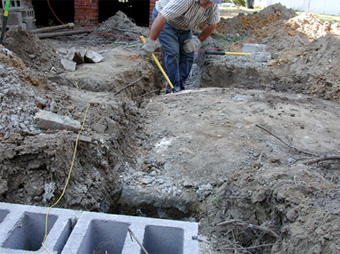
In the process of digging the footer with a backhoe, Jim discovered a five-foot square of concrete. We thought at first we had a cistern. the backhoe would not budge it, and we were concerned that we might fall into whatever it was if we weren't careful. We called the very nice building inspector (who knows a lot about a lot of things) to discuss the issue and he told us we have a septic tank. We could have bridged over the top, but we opted to fill it in instead. It was recommended that we not have a septic tank under the house!
Decommissioning a septic tank is something one just does not merely go out and do. The local inspectors have to be talked to and different areas of the country have various laws governing how this is done and who can do it and what paperwork is required.
|
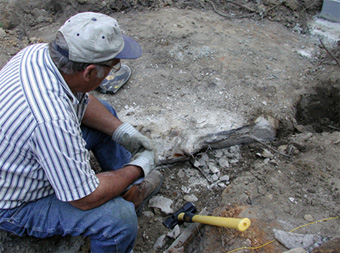
A brand new 8 pound maul from our favorite hardware store and a bunch of effort, showed us the concrete had metal imbedded in it. There was no way we were going to blast through this with a sledge hammer.
|
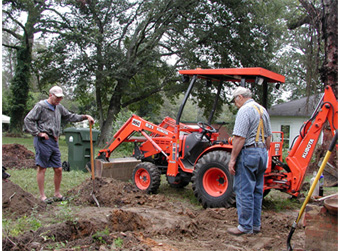
Neighbor Dave stops by to sympathize and brainstorm. This backhoe, while a marvelous tool, would not budge the concrete cap. In fact, we were concerned that we might do something and the entire thing (including driver) would fall into a hole.
|
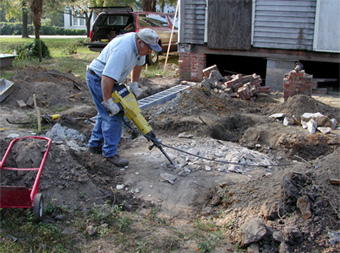
The rental company had a jack hammer we put to good use.
|
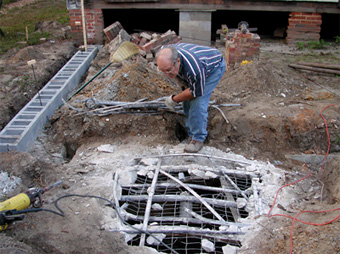
Progress. The metal was interlaced and had to be removed one piece at at time. Fourteen feet down was the bottom of the old septic tank. Since the house had never been hooked to the public sewer, this served for about 70 years. There was no opening that would have allowed the tank to be pumped. Note that the footer did not pass over the hole, but just to its side. Since the septic tank hadn't been used in almost 30 years, any material in the tank had long since decomposed and there were no odors.
|
|
|
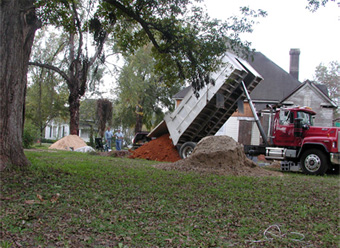
Load three of dirt, this time some red Georgia clay--cheapest stuff around to fill up a hole in the ground.
|
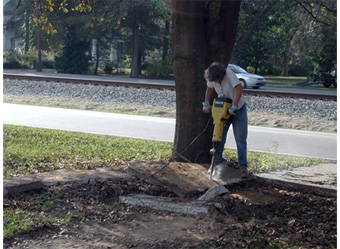
An old sidewalk from nearby home gave us some concrete to fill in the septic tank. Concrete pieces would keep dirt in the hole from compacting. Elizabeth is shown here busting up the concrete while Jim hauled the broken pieces to our backyard with the rented Kubota. One of our contractor neighbors said this is the first time in his life he ever saw a woman on the end of a jack hammer. Note the railroad track in background.
|
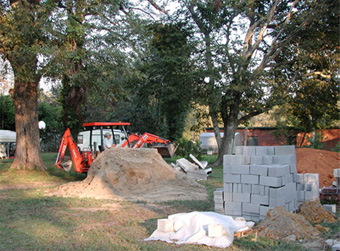
Our backyard now had three piles of dirt, a stack of concrete block, two stacks of cleaned old brick, and a pile of concrete chunks.
|
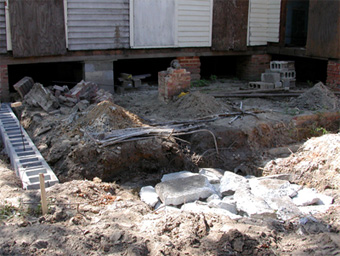
A combination of old sidewalk chunks and red clay soon filled the septic tank. We kept water flowing into the hole to wash fill dirt around the concrete for better compaction. Notice that the trench for our footer does not pass over the septic tank but travels behind it on undisturbed soil.
|
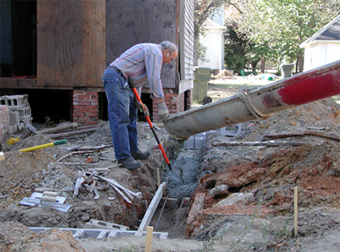
Another load of concrete was delivered to continue our footer. We had left pieces of re-bar extend from the previous pour which would tie the two concrete pours together. Now our foundation was complete.
|
|
|
|
|